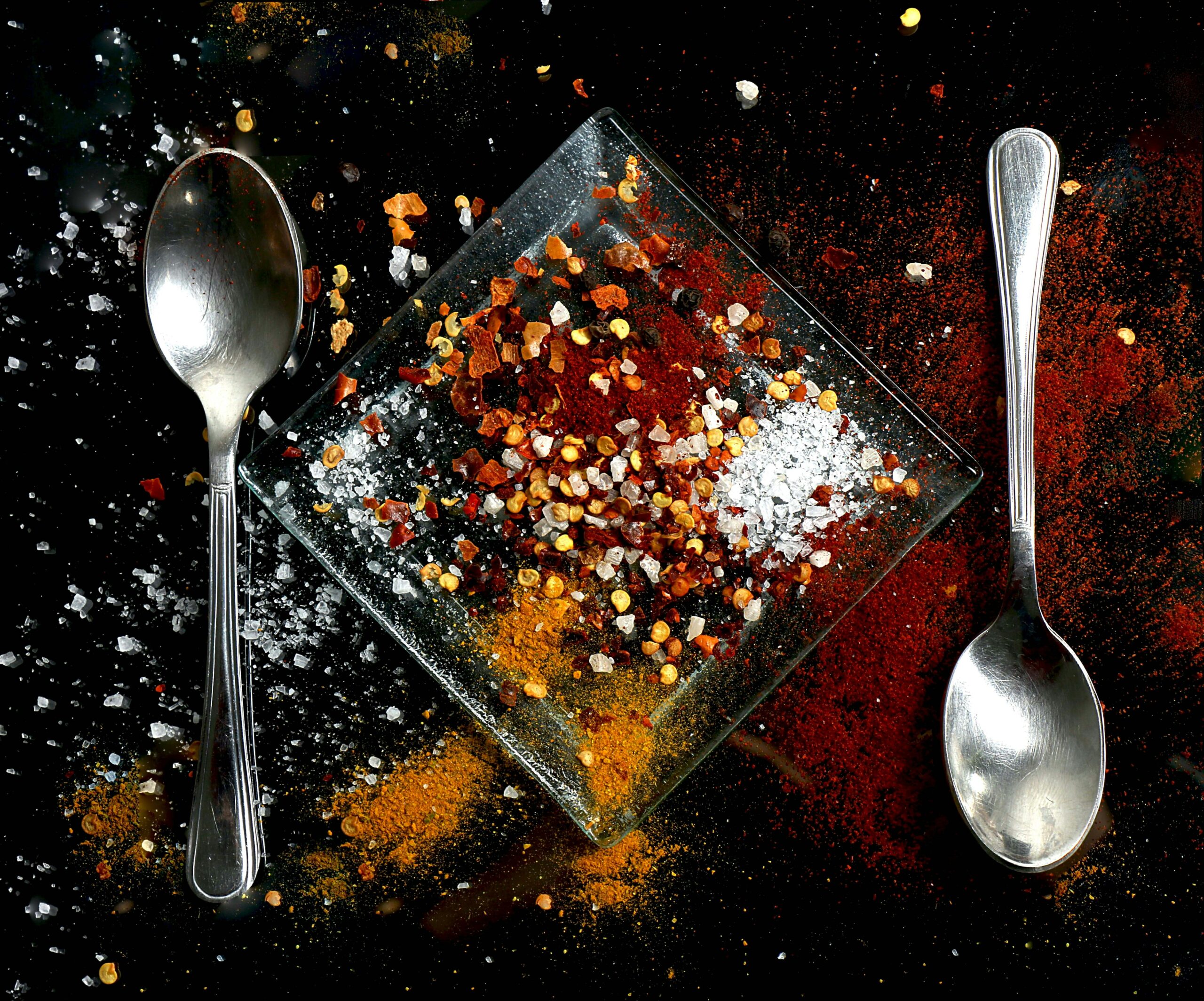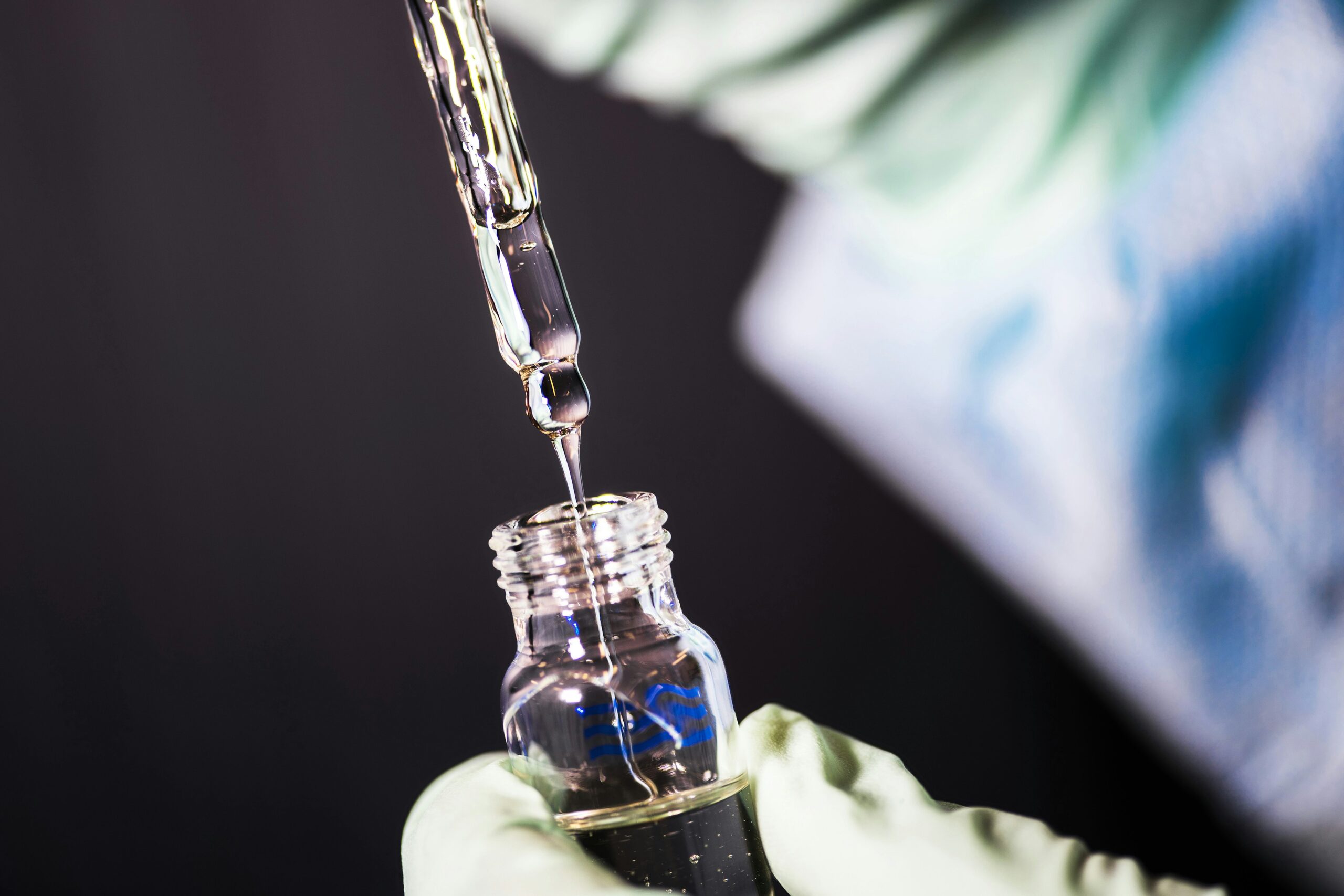Food ingredients are additives that are used in the production of food products. Many types of food additives have specific functions and properties. In the food industry, manufacturers ensure that their products are attractive to consumers, and therefore, food formulations are created to achieve the right taste and aesthetic qualities. In addition to this, it is also essential for the food to maintain the right consistency and freshness.
Food ingredients can modify the characteristics of products to improve their quality and encourage consumers to buy them. Nowadays, there is a vast choice of food products on the shelves, and food additives have become commonplace. Natural food ingredients are often used because of their safety and health effects. However, food additives can be harmful when consumed in large quantities.
For this reason, many countries have specific restrictions on legalizing particular food additives that studies have shown to be too dangerous. Thus, it is essential to test and analyze every ingredient added to food for toxicity. Many ingredients can also be allergenic; safety information should always be available to consumers. Knowing eating habits is vital to staying healthy, so knowing what is getting into our bellies is better. Learn more about food ingredients.

Hundreds of various additives with specific functions are added to food products. Food ingredients aim to benefit producers and customers. Food additives improve the properties of products, increase quality, strength, and nutritional value, or make food preparation easier. Ingredients can also be combined with different additives and act synergistically![]() .
.
Depending on the product type and manufacturer's intentions, additives come in various quantities. Chemical ingredients added to foods can be produced synthetically![]() or from natural sources
or from natural sources![]() of animal or plant origin. Some food ingredients are directly added to products, while others are added indirectly through contact with packaging materials. Some of the types of food ingredients are:
of animal or plant origin. Some food ingredients are directly added to products, while others are added indirectly through contact with packaging materials. Some of the types of food ingredients are:
Preservatives are chemical food additives that prolong products' freshness and shelf life. Many preservatives are necessary and positively affect the product because they destroy developing pathogens that can cause poisoning. Preservatives protect food from fermentation and bacterial or mold growth. However, some preservatives consumed in excess can harm health, which is why many products on the market advertise themselves as preservative-free. One popular preservative is sodium benzoate![]() . The excellent water solubility of sodium benzoate makes it widely used as a food preservative, but it is not of natural origin.
. The excellent water solubility of sodium benzoate makes it widely used as a food preservative, but it is not of natural origin.

Antioxidants are used in food production because they have preservative and health-promoting properties. Antioxidants as food additives prevent oxidation processes in lipids and vitamins. It, therefore, prevents the auto-oxidation of foods and extends the shelf life of products. Thanks to antioxidants, foods do not develop rancidity; they retain their intense and fresh taste and aroma over a long period. Antioxidants are often used to preserve frozen food, which should remain fresh for a long time. It allows us, for example, to store frozen fruit in the freezer for longer than fresh fruit, benefiting from the vitamins and nutrients it retains.
Emulsifiers are suitable for dispersing oils and flavors in food. Water and oil combine to form a stable mixture by stabilizing emulsions and essential fats. The texturizing properties of emulsifiers add the proper viscosity to products. It is necessary for dairy products such as margarine. Emulsifiers also affect the appearance of chocolates by delaying the appearance of a whitish-grey film on their surface. In addition, these food additives delay the blackening processes of bread. The wide use of emulsifiers makes them popular food ingredients. Emulsifiers include lecithin of natural origin, which has many valuable functions in the human body.
Colorants are mainly used to give products the right, attractive color. Natural and synthetic substances are used to improve color. Recently, an interest in natural dyes extracted from fruits and vegetables has increased. It is linked to the controversy over synthetic dyes. Artificial dyes are more durable than natural dyes, but using artificial dyes in excessive quantities can cause deterioration of health. Dyes are used for various types of products. Sodium nitrite![]() , for example, is used for meat products because it interacts with meat pigments to give the meat a fresh appearance, in addition to its antimicrobial properties. Dyes help mask unfavorable discoloration and reduce the product's loss of aroma and flavor compounds.
, for example, is used for meat products because it interacts with meat pigments to give the meat a fresh appearance, in addition to its antimicrobial properties. Dyes help mask unfavorable discoloration and reduce the product's loss of aroma and flavor compounds.
Stabilizers act in a similar way to emulsifiers. The chemicals are good for maintaining texture and shelf life in foods. The right food texture is essential in products such as ice cream. In addition, stabilizers can prevent evaporation and the escape of flavors. The popularity of stabilizers in food is high due to the multifunctional nature of the substances. Therefore, they are used in various food and beverage products. Stabilizers include multiple substances, often in the type of natural gums. A stabilizer is, for example, carrageenan![]() , which works well as a stabilizer, thickener, and gelling agent. Carrageenan is considered a safe stabilizer if the recommended daily intake is not exceeded. Many food ingredients can cause harm to health in excess.
, which works well as a stabilizer, thickener, and gelling agent. Carrageenan is considered a safe stabilizer if the recommended daily intake is not exceeded. Many food ingredients can cause harm to health in excess.

The most commonly used food ingredients are additives that improve the smell or taste. Flavor enhancers are used to increase flavor intensity or modify the taste. However, it is essential to note that flavor enhancers do not add any new flavor to the product; they only affect the basic taste of the product. Flavor enhancers are also used to restore flavors that were lost during thermal processing. Chemicals that affect flavor are used in instant soups, among other things. One popular flavor enhancer is monosodium glutamate![]() . MSG effectively enhances flavor, but this ingredient is also controversial due to its side effects.
. MSG effectively enhances flavor, but this ingredient is also controversial due to its side effects.
Acids increase the acidity of products and give them an acidic taste. Acidity regulators, conversely, influence the acidity of products by controlling their intensity and affecting the alkalinity of the product's pH. Examples of food acids include hydrochloric acid![]() . Hydrochloric acid is widely used and has been recognized as a safe food additive. This substance, which influences the acidity of products, is used in dairy products such as curd cheese. Sodium lactate
. Hydrochloric acid is widely used and has been recognized as a safe food additive. This substance, which influences the acidity of products, is used in dairy products such as curd cheese. Sodium lactate![]() , on the other hand, is an example of an acidity regulator. This substance is also considered non-toxic. Sodium lactate imparts a neutral pH to products, which is why it is widely used not only in food products. In the food industry, sodium lactate produces jams and jellies.
, on the other hand, is an example of an acidity regulator. This substance is also considered non-toxic. Sodium lactate imparts a neutral pH to products, which is why it is widely used not only in food products. In the food industry, sodium lactate produces jams and jellies.
Sweeteners are among the most commonly used food additives. They are used to impart a suitable sweetness. Popular sweeteners include sucrose![]() , glucose
, glucose![]() , and fructose
, and fructose![]() . These food ingredients are so common that they are classified as separate food products rather than additives. In addition to standard sweeteners, low-calorie sweeteners are used in sugar-free products and drinks. The use of sweeteners is also associated with various controversies. Sweeteners such as glucose or fructose as food additives will increase products' sugar and calorie content. On the other hand, low-calorie sweeteners may have different side effects despite the absence of such effects.
. These food ingredients are so common that they are classified as separate food products rather than additives. In addition to standard sweeteners, low-calorie sweeteners are used in sugar-free products and drinks. The use of sweeteners is also associated with various controversies. Sweeteners such as glucose or fructose as food additives will increase products' sugar and calorie content. On the other hand, low-calorie sweeteners may have different side effects despite the absence of such effects.
Not all food additives are artificial and unhealthy. Very often, food ingredients are also health-promoting elements such as vitamins. Some vitamins are used for their preservative properties. Besides, vitamins can be added to cereal products to recover nutrients lost in processing. Vitamins can also be added to certain products to enhance their health properties. An example of such use is milk, to which manufacturers often add vitamin D![]() . Vitamin enrichment of food products is a preventive step to offset the problem of nutrient deficiencies. In the US, such measures are popular due to the numerous health problems in the population. Consequently, it is not only vitamins but also essential minerals that are added to various products.
. Vitamin enrichment of food products is a preventive step to offset the problem of nutrient deficiencies. In the US, such measures are popular due to the numerous health problems in the population. Consequently, it is not only vitamins but also essential minerals that are added to various products.

Everybody's food ingredients can exhibit different safety profiles. However, all food additives must be thoroughly tested for toxicity and allergies before being added to products that reach shop shelves. Chemicals to be added to food products in the US are tested by the manufacturer and the US Food and Drug Administration![]() . In different countries, there are also special agencies that oversee the safety of food products. Some specific rules and regulations benefit consumers.
. In different countries, there are also special agencies that oversee the safety of food products. Some specific rules and regulations benefit consumers.
However, it happens that the use of various food ingredients, which at first appeared to be safe, turns out to have various side effects, which are revealed in subsequent studies. Therefore, up-to-date research on food additives and caution in their use are important. Many additives are safe when consumed in moderation. Excess, on the other hand, is undesirable and can damage health.
Consequently, food ingredients that have many beneficial uses may have some risks. Some of the effects that the careless consumption of food additives can cause include:

Food additives can cause sudden allergic reactions in various types or increase the likelihood of developing an allergy to an ingredient. As such, allergic effects can be short or long-term. The use of food additives can also cause asthma![]() . Allergic effects are often caused by additives such as artificial food colors, sulfites, and flavor enhancers such as monosodium glutamate. Sensitive people with weakened immune systems are particularly vulnerable to allergies caused by food ingredients.
. Allergic effects are often caused by additives such as artificial food colors, sulfites, and flavor enhancers such as monosodium glutamate. Sensitive people with weakened immune systems are particularly vulnerable to allergies caused by food ingredients.
Consumption of food additives can cause or exacerbate skin problems, which can also have an allergic origin. Side effects of some food ingredients include urticaria![]() , angioedema
, angioedema![]() , and various types of skin inflammation. In addition, eating foods containing preservatives and synthetic flavorings is very bad for the complexion and can even cause acne. When it comes to skin problems, it is, therefore, important to pay a lot of attention to food ingredients.
, and various types of skin inflammation. In addition, eating foods containing preservatives and synthetic flavorings is very bad for the complexion and can even cause acne. When it comes to skin problems, it is, therefore, important to pay a lot of attention to food ingredients.
Some food additives can cause sudden gastrointestinal symptoms, such as abdominal pain![]() or diarrhoea
or diarrhoea![]() . In addition, the use of harmful food additives can lead to chronic gastrointestinal problems, including irritable bowel syndrome. Artificial fats are hazardous to the digestive system.
. In addition, the use of harmful food additives can lead to chronic gastrointestinal problems, including irritable bowel syndrome. Artificial fats are hazardous to the digestive system.
Further harmful effects of food additives are cardiovascular problems, which can lead to various serious diseases. It has been noted that the consumption of excess food additives can cause symptoms such as palpitations or shortness of breath. In addition, excess sweeteners can lead to high triglycerides![]() , which increase the risk of atherosclerosis and other heart diseases. Also, hydrogenated fats can cause cardiovascular disease.
, which increase the risk of atherosclerosis and other heart diseases. Also, hydrogenated fats can cause cardiovascular disease.

Food ingredients can also cause behavioral disorders. It is important to note that some food additives can harm children. In young people, various ingredients can increase the risk of side effects such as hyperactivity![]() . Such substances include artificial sweeteners such as aspartame, which can cause behavioral problems. It is, therefore, recommended that children and pregnant women avoid consuming artificial sweeteners. Some additives can also cause depression and mood swings or can be toxic to the nervous system.
. Such substances include artificial sweeteners such as aspartame, which can cause behavioral problems. It is, therefore, recommended that children and pregnant women avoid consuming artificial sweeteners. Some additives can also cause depression and mood swings or can be toxic to the nervous system.
Migraines are a severe health problem that often has no apparent cause. Therefore, the treatment of migraines is complicated. Some studies have shown that food additives may be linked to migraines. Monosodium glutamate, which is highly controversial, has been linked to side effects such as headaches![]() . Therefore, migraine sufferers should also consider these possible factors, and a change in diet may be helpful for them.
. Therefore, migraine sufferers should also consider these possible factors, and a change in diet may be helpful for them.
The issue of most significant concern about food additives is their possible effect on the development of cancer![]() . Particular caution should be exercised with colorings, preservatives, and flavor enhancers. Artificial food colorings show possible carcinogenicity. In addition to this, nitrites and nitrates can be dangerous, as these substances convert in the body into nitrosamines, which are considered to be potentially carcinogenic.
. Particular caution should be exercised with colorings, preservatives, and flavor enhancers. Artificial food colorings show possible carcinogenicity. In addition to this, nitrites and nitrates can be dangerous, as these substances convert in the body into nitrosamines, which are considered to be potentially carcinogenic.
Also, it has been noted that some artificial sweeteners may be linked to carcinogenic effects. Many dangerous substances with carcinogenic potential have been withdrawn from use and are on the list of banned ingredients. However, some food ingredients with potential carcinogenicity are still legal and used in production.